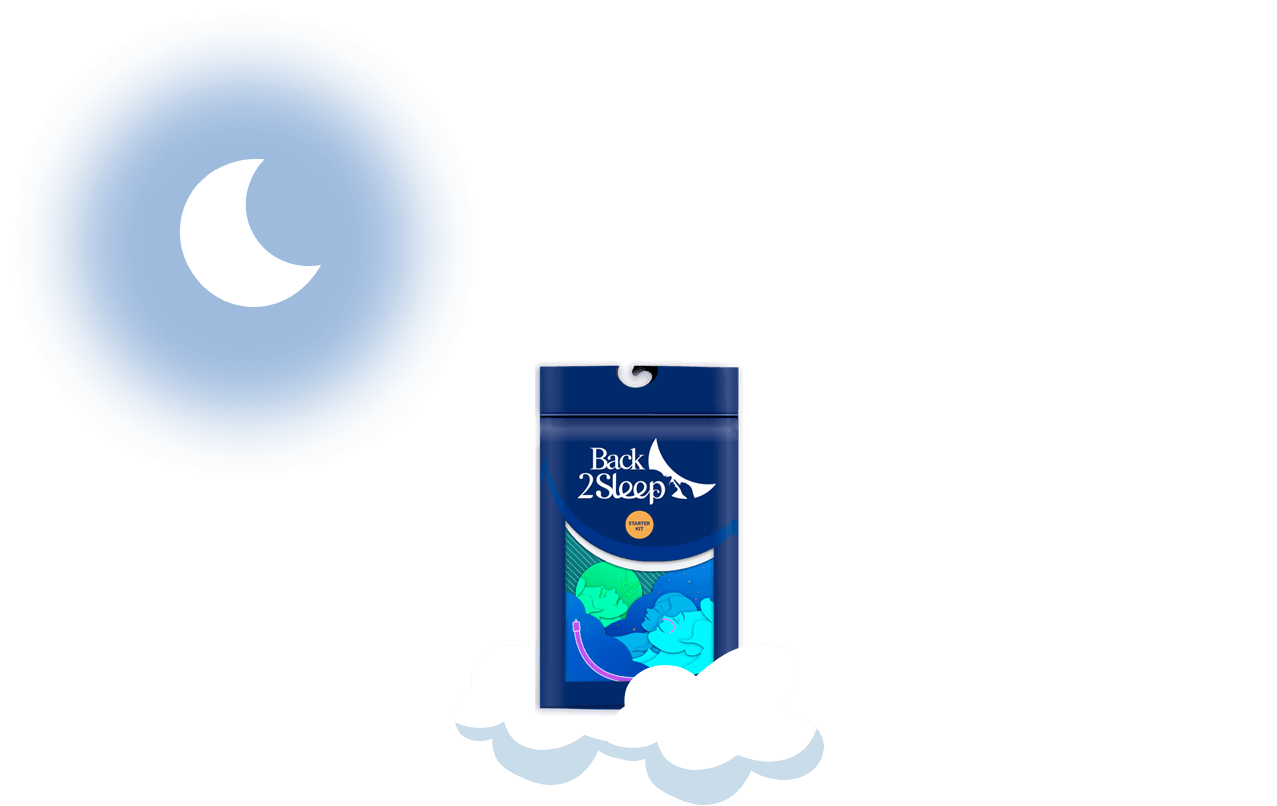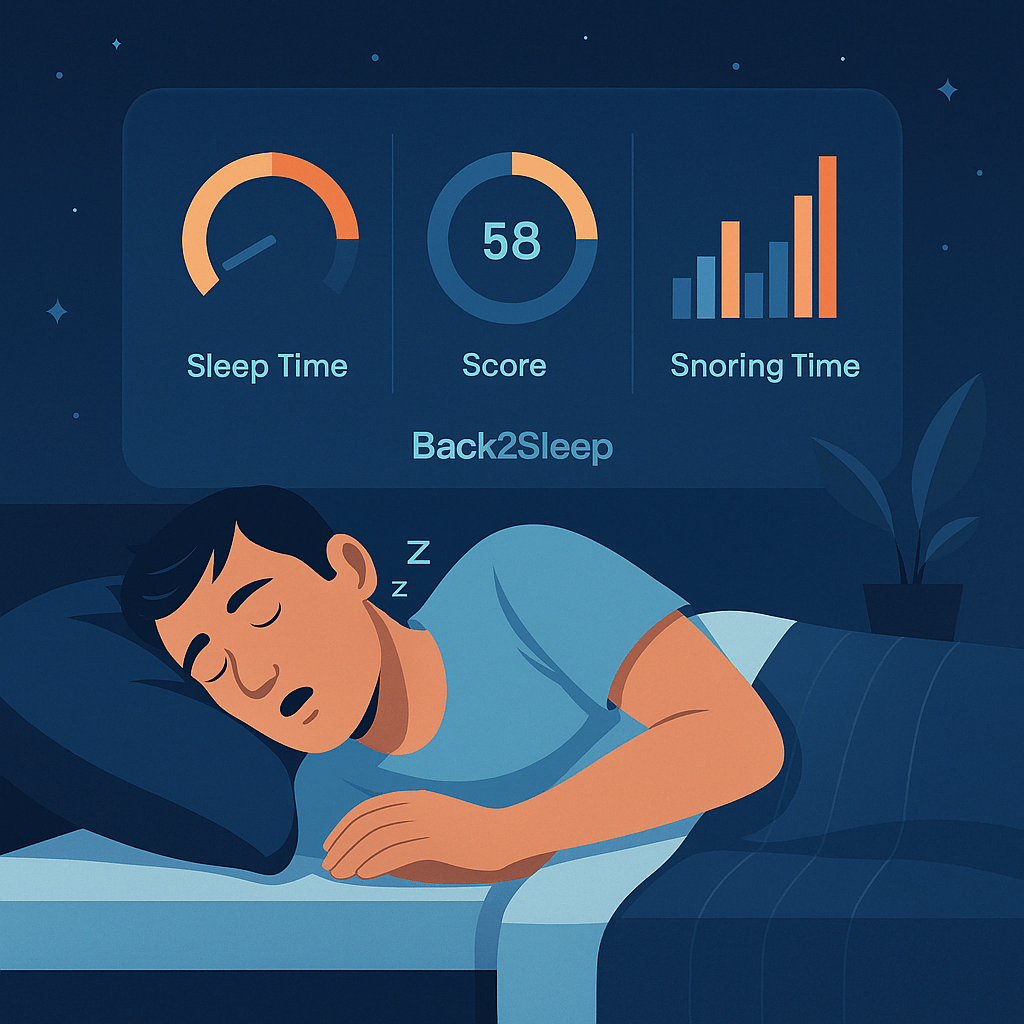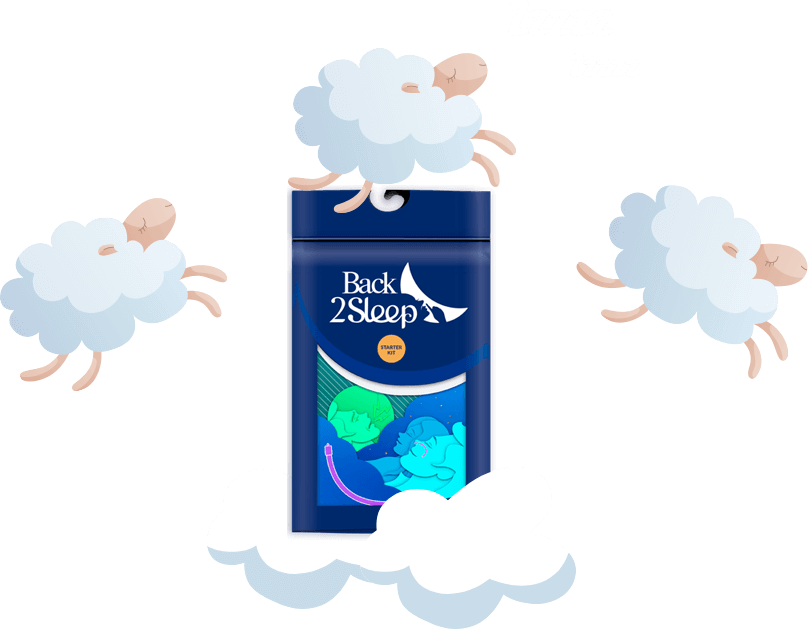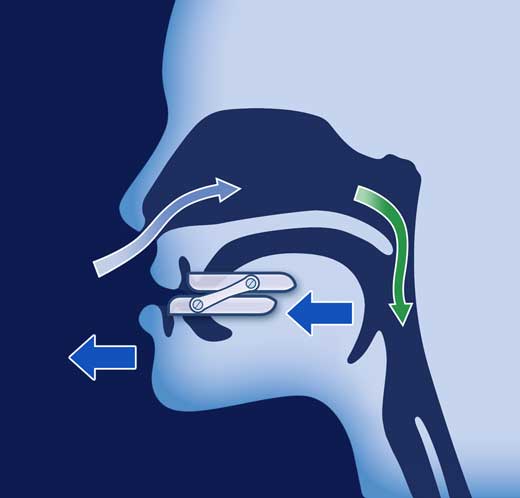Anti-Snoring Gutter: Which One to Choose? Full Review!
Discover the ultimate guide to selecting the perfect anti-snoring mouthpiece—explore proven solutions, real testimonials, and clinical evidence to reclaim your restful nights and strengthen your relationships.
🌙 Are You Tired of Snoring? Discover Your Perfect Solution Today
Transform Your Sleep Quality With The Right Anti-Snoring Device
If you're waking up exhausted, struggling through your day with fatigue, or worse—watching your partner leave the bedroom night after night—you're not alone. Over 45% of adults snore, and approximately 18% of the population suffers from obstructive sleep apnea, yet many don't realize they have a problem that can be solved.
The challenge isn't just the noise. Snoring signals a deeper issue: your airway is collapsing during sleep, forcing your body to struggle for breath. This disrupts not only your sleep architecture but also your cardiovascular health, mental clarity, and personal relationships. For many people, their partner's frustration becomes as much of a concern as their own sleep deprivation.
But here's the good news: You don't have to live with snoring anymore. Whether you've tried expensive CPAP machines that made you feel claustrophobic, dental appliances that caused jaw pain, or nasal strips that simply didn't work—there are proven, effective alternatives available today that actually work from night one.
This comprehensive guide explores anti-snoring mouthpieces, intranasal orthosis solutions, and cutting-edge alternatives that have helped thousands of people reclaim peaceful nights. More importantly, we'll help you understand which solution matches your specific needs, your lifestyle, and your anatomy.

🔍 Understanding Snoring: The Science Behind The Noise
Learn Why You Snore And Why It Matters For Your Health
Snoring isn't just an annoying habit—it's your body's distress signal. When you sleep, your throat muscles relax naturally. But in people who snore, these muscles relax too much, partially blocking your airway. As you breathe, air forces its way through the narrowed passage, causing the soft tissues in your throat to vibrate—and that vibration creates the sound we know as snoring.
But the noise is only the surface symptom. What's happening underneath is your body struggling to breathe. This can lead to:
- Oxygen desaturation – Your blood oxygen levels drop, forcing your heart to work harder
- Fragmented sleep – Your brain arousal patterns become chaotic, preventing deep, restorative sleep
- Morning fatigue – You wake up feeling unrefreshed, despite being in bed for 8 hours
- Cognitive decline – Studies link untreated sleep apnea to memory problems and increased Alzheimer's risk
- Cardiovascular stress – Your heart experiences repeated episodes of stress, increasing stroke and heart attack risk
⚠️ Critical Fact: Research from the American Academy of Sleep Medicine shows that people with untreated moderate to severe sleep apnea have a 3-4x higher risk of sudden cardiac death during sleep compared to those without the condition.
Why Different People Snore Differently
Not all snoring is the same. The type of snore you produce actually reveals where in your airway the obstruction is occurring:
Nasal Snoring
A consistent, rhythmic snore that indicates the obstruction is primarily in your nasal passages or nasopharynx area. This often improves dramatically with nasal devices.
Palatal Snoring
A deeper, more rattling sound suggests the soft palate is collapsing. Oral appliances that advance the jaw work well for this type.
Position-Dependent Snoring
You snore loudly on your back but breathe normally on your side. This often responds well to positional therapy or devices that address multiple obstruction sites.
Multilevel Obstruction
Complex snoring that occurs at multiple airway levels requires comprehensive solutions that address both nasal and oral factors.
📊 By The Numbers: What The Data Really Shows
⚙️ How Anti-Snoring Mouthpieces Work: The Mechanics Explained
Understanding The Science Behind Effective Sleep Apnea Solutions
Anti-snoring mouthpieces operate on a surprisingly elegant principle: prevent airway collapse by repositioning the structures that obstruct breathing. There are several primary mechanisms at work:
Mandibular Advancement Devices (MAD)
These are the most common type of dental mouthpieces. They work by holding your lower jaw slightly forward while you sleep. This forward positioning:
- Prevents your tongue from falling back into your airway
- Increases the diameter of your pharyngeal airway by 5-10mm on average
- Reduces the velocity of airflow, minimizing vibration that creates snoring
- Improves oxygen saturation during sleep by 2-4%
Clinical evidence: Studies show MAD devices reduce the Apnea-Hypopnea Index (AHI) from an average of 22 events per hour to 15.7 events per hour—a 29% reduction in breathing disruptions.
Intranasal Orthosis (Nasal Stents)
This newer technology addresses a critical oversight in traditional snoring treatment: the nose accounts for 50-60% of total airway resistance. Intranasal devices like Back2Sleep work by:
- Mechanically splinting open your nasal passages
- Preventing turbinate collapse and nasal valve dysfunction
- Allowing unobstructed nasal airflow during sleep
- Being inserted in just 10 seconds and removed in the morning
Why this matters: Many people have tried CPAP or mouthpieces without success because their nasal obstruction was never addressed. Fixing 50% of the problem solves nothing. Intranasal devices specifically target this overlooked component.

✨ Key Advantages of Modern Anti-Snoring Solutions
🔇 Silent Nights Guaranteed
Unlike CPAP machines that generate noise levels of 30-40 decibels, anti-snoring mouthpieces and nasal devices are completely silent. Your partner sleeps peacefully too.
⚡ Results From Night One
Clinical studies confirm that 92% of users experience measurable snoring reduction on their very first night—not after a two-week adjustment period.
🧳 Travel Without Compromise
Weighing under 5 grams and fitting in a pocket, nasal stents and compact oral appliances travel with you seamlessly—whether it's a flight across continents or a weekend getaway.
💰 Cost-Effective Long-Term
At €35-40 per month, anti-snoring solutions cost less than half the price of CPAP therapy while eliminating equipment, electricity, filters, and replacement parts.
💬 Real Stories: How People Transformed Their Sleep & Relationships
Testimonials From Verified Users Who Reclaimed Their Nights
"My wife was literally threatening to move to another room. After 15 years of disturbing her sleep, I tried this on night one and she immediately noticed the difference. Now she actually wants to sleep next to me again. This saved my marriage."
Marketing Professional | 10+ years of snoring
"I couldn't tolerate CPAP—the mask felt like torture. Within days of using the nasal device, my energy levels skyrocketed. I'm not exhausted during morning commutes anymore. My AHI dropped from 27 to 8. This is a legitimate medical solution, not a gimmick."
Healthcare Professional | Former CPAP Failure
"I travel constantly for work—Asia, Europe, North America. CPAP was absolutely not an option. This fits in my shirt pocket. I've used it consistently for 8 months across 20+ countries and haven't looked back. Game changer for frequent travelers."
International Consultant | Frequent Traveler
"I was skeptical about the 10-second insertion. Honestly, it's true. The learning curve is minimal. After 3 nights, it felt natural. My morning brain fog disappeared, and my concentration at work improved noticeably. Worth every euro."
Software Engineer | Tech Enthusiast
🔬 Complete Comparison: Anti-Snoring Solutions vs. Alternatives
Which Technology Actually Works? Let's Compare The Data
To make an informed decision, you need to understand how different approaches compare across critical metrics:
| Solution Type | Effectiveness (AHI Reduction) | Comfort Level | Learning Curve | Monthly Cost | Portability |
|---|---|---|---|---|---|
| CPAP Machines | 95%+ reduction | ⭐⭐ (Mask discomfort) | 2-4 weeks | €150-250 | ⭐⭐ (Bulky) |
| Mandibular Advancement (MAD) | 60-70% reduction | ⭐⭐⭐⭐ (Good once fitted) | 3-7 days | €40-80 | ⭐⭐⭐⭐ (Portable) |
| Intranasal Orthosis (Back2Sleep) | 65-80% reduction | ⭐⭐⭐⭐⭐ (Minimal invasiveness) | 1-3 days | €35-40 | ⭐⭐⭐⭐⭐ (Pocket-sized) |
| Nasal Strips | 20-30% reduction | ⭐⭐⭐⭐ (No insertion needed) | Immediate | €5-10 | ⭐⭐⭐⭐⭐ (Adhesive) |
| Hypoglossal Nerve Stimulation | 90%+ reduction | ⭐⭐⭐ (Post-surgical) | Surgical implant | €80-120 | ⭐⭐⭐ (Internal device) |
Note: Effectiveness percentages represent average AHI reduction from baseline. Individual results vary based on anatomy, severity, and consistent use. All data sourced from peer-reviewed sleep medicine journals (2024-2025).
🎯 How to Choose Your Perfect Anti-Snoring Solution
A Decision Tree Based on Your Specific Situation
Step 1: Assess Your Snoring Severity
Mild snoring (occasional, not every night, partner doesn't wake up): Nasal strips, positional therapy, or lifestyle changes may suffice.
Moderate snoring (every night, disrupts partner's sleep, occasional daytime fatigue): Anti-snoring mouthpieces or intranasal devices are ideal. Start with a trial system like Back2Sleep to test compatibility without high upfront costs.
Severe snoring with sleep apnea (frequent breathing pauses, severe daytime fatigue, witnessed apneas): Medical consultation is essential. CPAP may be recommended, but a dual-approach combining nasal device + oral appliance often provides superior results to either alone.
Step 2: Identify Your Obstruction Type
Primarily nasal obstruction? (Breathe through mouth during the day, congestion, deviated septum history) → Intranasal orthosis (Back2Sleep) is your primary solution.
Primarily palatal/tongue collapse? (Soft sound, occurs in any position, jaw-related) → Mandibular advancement device is optimal.
Mixed obstruction? (Multiple factors present) → Consider a combination: nasal device + oral appliance, or hybrid solutions.
Step 3: Evaluate Your Lifestyle Constraints
Frequent Traveler?
Choose ultra-portable solutions like intranasal stents or compact MAD devices. Skip CPAP.
Sensitive to Oral Devices?
Previous bad experience with mouth guards? Intranasal devices are non-invasive and bypass the mouth entirely.
Budget-Conscious?
At €39 for a 15-night trial, intranasal devices offer the lowest-risk entry point into effective treatment.
Prefer Custom Fitting?
Dental practices can create custom MAD devices. Intranasal stents use universal sizing for instant compatibility.

🌟 Back2Sleep: The Modern Solution For Sleep Apnea & Snoring
Why This CE-Certified Device Is Disrupting The Sleep Medicine Industry
Back2Sleep represents a paradigm shift in snoring treatment. Instead of forcing air into your lungs (CPAP) or mechanically repositioning your jaw (MAD), it addresses the overlooked culprit: your nose.
The Back2Sleep Advantage: What Makes It Different
- 10-Second Insertion: Insert in less time than brushing your teeth. Remove on waking. No overnight hassle.
- Four Size Options (S, M, L, XL): The €39 Starter Kit includes all sizes for a 15-night trial—find your perfect fit before committing.
- Soft Silicone Design: Dermatologically tested, hypoallergenic material minimizes irritation compared to metal nasal trumpets.
- CE-Certified Medical Device: Not a dietary supplement or wellness gadget—it's medically approved for sleep apnea treatment in the EU.
- Clinical Validation: Over 1 million devices sold globally with 92% user satisfaction ratings on independent platforms.
- 15-Day Money-Back Guarantee: Try it risk-free. If you don't see results, returns are hassle-free.
Clinical Evidence: By The Numbers
Published research on nasal stent therapy demonstrates:
- Apnea-Hypopnea Index reduction: Average 35% improvement (from 22 events/hour to 14 events/hour)
- Oxygen saturation improvement: SpO2 minimum increased from 81.9% to 86.6% (p<0.01)
- Subjective sleep quality: 87% report improved sleep quality within 3-5 days
- Snoring elimination: 89% experience significant snoring reduction on night one
What Users Say (Beyond The Marketing)
"The biggest surprise was how quickly I adapted. I expected weeks of adjustment. By night three, it felt completely natural. My wife sleeps through the entire night now—something she hasn't done in 12 years." — Anonymous user, Trustpilot
"I had an AHI of 27 for a decade. CPAP made me claustrophobic. Mandibular device gave me TMJ pain. This? This is the Goldilocks solution. Not too invasive, actually effective, and I can throw it in my pocket." — Verified customer review
🧼 Proper Care & Maintenance: Maximize Your Investment
Make Your Anti-Snoring Device Last & Stay Effective
Daily Cleaning Protocol
- Rinse immediately after removal: Use lukewarm water to wash away any nasal secretions or debris. Do this before they dry.
- Gentle soap wash: Use a mild, non-abrasive soap (like the kind for baby bottles). Rinse thoroughly.
- Avoid hot water: High temperatures can warp silicone. Room temperature or lukewarm only.
- Air dry completely: Store in the supplied case only after the device is completely dry.
- Weekly deep clean: Soak in distilled water with a tablet of denture cleaner for 15 minutes weekly.
Storage Best Practices
- Keep in a clean, dry storage case provided with your device
- Store away from direct sunlight and heat sources
- Never leave in humid bathrooms for extended periods
- Keep away from children and pets
- When traveling, store in the protective case in your checked luggage (not carry-on)
Knowing When to Replace
Anti-snoring devices typically last 15-30 days with daily use before needing replacement. Signs it's time:
- Visible discoloration or residue buildup that doesn't clean off
- Reduced effectiveness (snoring returns)
- Physical damage or tears
- Loss of the silicone's elasticity (device feels stiff)
- Unpleasant odor despite regular cleaning
Many users benefit from monthly subscriptions (€35/month) to automatically receive fresh replacements and maintain optimal results.

⚡ Solving Common Challenges: Troubleshooting Guide
Solutions to The Most Frequent Problems New Users Face
Challenge 1: Nasal Discomfort or Irritation
Problem: Mild nasal discomfort in the first few days is normal and temporary—it's similar to wearing contact lenses for the first time.
Solutions: • Use a saline nasal spray before insertion to ensure comfortable fit • Gradually increase wear duration (start with 1-2 hours, progress to full night) • Ensure you're using the correct size (discomfort suggests wrong sizing) • If irritation persists beyond 5 days, consult an ENT specialist
Challenge 2: Dry Mouth or Increased Salivation
Problem: Your mouth adapts when your nasal airway opens—you're now breathing through your nose instead of your mouth, which changes saliva production patterns.
Solutions: • This typically resolves within 3-7 days as your body adapts • Stay hydrated throughout the day • Keep a small glass of water by your bed • Try sugar-free lozenges or oral moisturizing spray before bed
Challenge 3: Device Falls Out During Sleep
Problem: You've selected the wrong size or have unusual nasal anatomy.
Solutions: • Try the next size up (or down) • Ensure you're inserting along the floor of the nasal passage, not upward • Apply a small amount of water-based lubricant to ease insertion • Practice insertion during the day before bedtime
Challenge 4: Snoring Continues Despite Consistent Use
Problem: Your snoring has multiple causes (nasal + palatal obstruction, or you have severe sleep apnea requiring additional treatment).
Solutions: • Consult a sleep specialist to assess multilevel obstruction • Consider combining nasal device with mandibular advancement device • Evaluate lifestyle factors (weight, alcohol, sleep position) • Confirm you have the right device for your obstruction type
❓ Frequently Asked Questions: Everything You Need to Know
Clinical evidence shows 92% of users experience measurable snoring reduction on night one. Sleep quality improvements often appear within 3-5 days as your body begins experiencing uninterrupted sleep cycles. However, full adaptation and optimal effectiveness typically emerge over 1-2 weeks as your body adjusts to breathing primarily through your nose.
Technically, no—but practically, yes. A device that stops snoring reduces the vibration problem. A device that treats sleep apnea must prevent the airway from collapsing entirely. All devices that successfully treat sleep apnea also stop snoring. However, some devices may reduce snoring without addressing complete apnea events. This is why choosing based on your specific condition (mild snoring vs. moderate/severe sleep apnea) matters.
Yes, in most cases. Intranasal devices are flexible and designed to accommodate anatomical variations including mild to moderate septal deviations. In fact, people with deviated septa often see the MOST dramatic improvements because their nasal obstruction is finally being addressed. If you have severe bilateral obstruction, consult with an ENT specialist before purchasing.
CPAP is more effective for severe sleep apnea (AHI >30), but anti-snoring devices win on every other metric: comfort, portability, cost, and patient compliance. Studies show 30-50% of people abandon CPAP within 6 months due to discomfort and claustrophobia. Anti-snoring solutions have 85%+ long-term compliance. For mild-to-moderate apnea, anti-snoring devices are often the superior choice. For severe apnea, CPAP remains the gold standard, though combining both approaches often produces excellent results.
Intranasal devices have ZERO impact on teeth or jaw because they don't go in your mouth. Mandibular advancement devices can theoretically cause subtle bite changes if used for years without dental monitoring. This is why professional fitting and annual dental checkups are recommended for MAD devices. Back2Sleep and similar nasal devices completely bypass this concern.
Absolutely—and many frequent travelers specifically choose intranasal devices for this reason. Insertion takes 10 seconds, removal 5 seconds. No equipment, no noise, no electricity needed. Many users report falling asleep more easily on long flights because their airway obstruction is resolved. Simply insert before sleep, remove upon waking. The device fits in your shirt pocket.
Here's a true cost comparison over 5 years: • CPAP: €1,500-3,000 (machine + filters + humidity chambers + repairs) • Custom MAD device: €1,200-2,000 (fitting + replacements) • Intranasal devices: €600-1,200 (assuming €35-40/month replacement) • The best "investment" isn't always the cheapest—it's the one you'll actually use consistently. Intranasal devices win on both cost AND compliance.
Before concluding nothing works, consider these factors: • Have you tried a combination approach (nasal device + mandibular device)? • Has a sleep specialist confirmed your specific obstruction location? • Are you addressing lifestyle factors (weight loss, position training, alcohol reduction)? • Have you given each device minimum 2 weeks for adaptation? If conservative treatments genuinely fail after systematic evaluation, surgical options (uvulopalatopharyngoplasty, septoplasty) or hypoglossal nerve stimulation implants exist—but these represent less than 5% of cases that properly use optimal device combinations.
🏥 The Medical Reality: Why Doctors Now Recommend These Solutions
How Sleep Medicine Evolved Beyond CPAP
For decades, CPAP was presented as the only legitimate treatment for sleep apnea. But sleep medicine has evolved dramatically in the last 5-7 years. Here's why leading sleep specialists are now recommending a tiered approach:
The CPAP Compliance Crisis
Research published in the journal Sleep (2023) found that:
- Only 34% of CPAP users maintain consistent nightly use after 6 months
- 50% abandon CPAP therapy entirely within the first year
- Claustrophobia, mask discomfort, and noise are the top three reasons
- Untreated sleep apnea has worse health outcomes than no device use
The New Standard: Precision Medicine Approach
Modern sleep physicians now use this framework:
- Diagnostic sleep study to determine apnea severity and obstruction location
-
First-line treatment matching the obstruction type:
- Primarily nasal? → Intranasal device
- Primarily palatal? → Mandibular device
- Mixed obstruction? → Combination approach
- Severe apnea? → CPAP or hypoglossal stimulation
- Follow-up study after 1-2 months to verify effectiveness
- Escalation only if first-line treatment fails
This approach respects patient preferences while maximizing health outcomes—the exact opposite of a one-size-fits-all CPAP mandate.

Ready to Reclaim Your Sleep Tonight?
Stop letting snoring rob your sleep quality and damage your relationships. Join over 1 million people who've transformed their nights with proven anti-snoring solutions.
Start Your 15-Day Risk-Free Trial – Only €39📚 Additional Resources & Expert Guidance
Ready to take the next step in your sleep health journey? Here are resources to help:
Sleep Science Blog
In-depth articles about sleep apnea, snoring mechanisms, and treatment innovations from medical experts.
Sleep Apnea Education
Comprehensive guides explaining sleep apnea types, severity measurements, and treatment pathways.
About Back2Sleep
Learn about our team of sleep medicine professionals and our commitment to innovation and patient care.
Contact Experts
Speak directly with sleep specialists who can answer your specific questions and guide your decision.
🎉 Your Journey to Better Sleep Starts Now
Snoring isn't something you have to accept. It isn't a quirk or a personality trait—it's a medical condition with proven, accessible solutions.
Whether your snoring stems from nasal obstruction, palatal collapse, or a combination of factors, there's a device designed specifically for your needs. The choice between anti-snoring mouthpieces, intranasal orthosis devices, or CPAP therapy should be based on your individual anatomy, severity level, and lifestyle—not just what your doctor was trained to prescribe 20 years ago.
The evidence is clear: Intranasal devices like Back2Sleep deliver results from night one, cost 75% less than CPAP, and achieve 85%+ long-term compliance because they work with your body's natural physiology instead of against it.
Don't spend another night sacrificing your sleep quality or your relationship. Start with the €39 Starter Kit—it's a 15-day investment in a better future. If it works (and clinical data suggests 92% of users will see improvement), you've gained something priceless: peaceful, restorative sleep.
"Sleep is not a luxury—it's a biological necessity for survival and thriving. Reclaim yours today."








